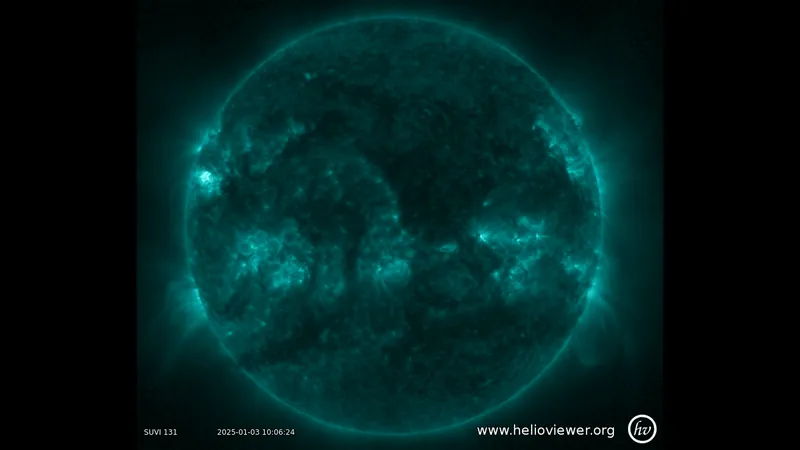
Solar Excitement: Massive X1.2 Solar Flare Causes Radio Blackouts Across Southern Hemisphere
2025-01-03
Author: Ken Lee
In an electrifying start to 2025, the sun unleashed a powerful X-class solar flare early this morning, captivating scientists and skywatchers alike. At 6:40 a.m. EST (1140 GMT) on January 3rd, the impressive flare reached peak intensity at X1.2, originating from the sunspot region designated AR 3947. This extraordinary event led to significant radio blackouts affecting regions of the Southern Atlantic, parts of Africa, and eastern South America.
These radio blackouts are no small matter. During such events, there can be a complete or partial loss of high-frequency (HF) radio signals in areas illuminated by sunlight at the time of the flare. This phenomenon can disrupt communication systems, affecting aviation, maritime activities, and emergency services, highlighting the sun's direct impact on modern technology and infrastructure.
Solar flares are categorized using a four-class scale based on their intensity. X-class flares, including today's massive X1.2 event, are the strongest on the scale, which also includes M-class, C-class, and B-class flares. Each subsequent class indicates a flare that is ten times more potent than the one below it, underscoring the severity of today's event. The current incident registered as an R3 on the National Oceanic and Atmospheric Administration (NOAA)'s Space Weather Prediction Center (SWPC) scale, denoting it as a "Strong" radio blackout, just a notch below the severe (R4) and extreme (R5) classifications.
Notably, the latest SWPC forecast did not report any accompanying coronal mass ejections (CMEs)—large expulsions of plasma and magnetic field from the sun—which often lead to geomagnetic storms on Earth. While CMEs can disrupt power grids and create stunning auroras in lower latitudes, today's solar flare appears to be an isolated event, although it certainly caught the attention of solar physicists and hobbyists worldwide.
Looking ahead, forecasters predict that the active sunspot regions may continue to generate minor to moderate radio blackouts over the weekend of January 5th. As the sun exhibits its dynamic behavior, researchers are keenly monitoring developments, and they urge those affected by possible disruptions to stay updated and prepare for potential impacts.
Stay tuned as we continue to monitor this fascinating solar activity and its implications for Earth!


 Brasil (PT)
Brasil (PT)
 Canada (EN)
Canada (EN)
 Chile (ES)
Chile (ES)
 Česko (CS)
Česko (CS)
 대한민국 (KO)
대한민국 (KO)
 España (ES)
España (ES)
 France (FR)
France (FR)
 Hong Kong (EN)
Hong Kong (EN)
 Italia (IT)
Italia (IT)
 日本 (JA)
日本 (JA)
 Magyarország (HU)
Magyarország (HU)
 Norge (NO)
Norge (NO)
 Polska (PL)
Polska (PL)
 Schweiz (DE)
Schweiz (DE)
 Singapore (EN)
Singapore (EN)
 Sverige (SV)
Sverige (SV)
 Suomi (FI)
Suomi (FI)
 Türkiye (TR)
Türkiye (TR)
 الإمارات العربية المتحدة (AR)
الإمارات العربية المتحدة (AR)